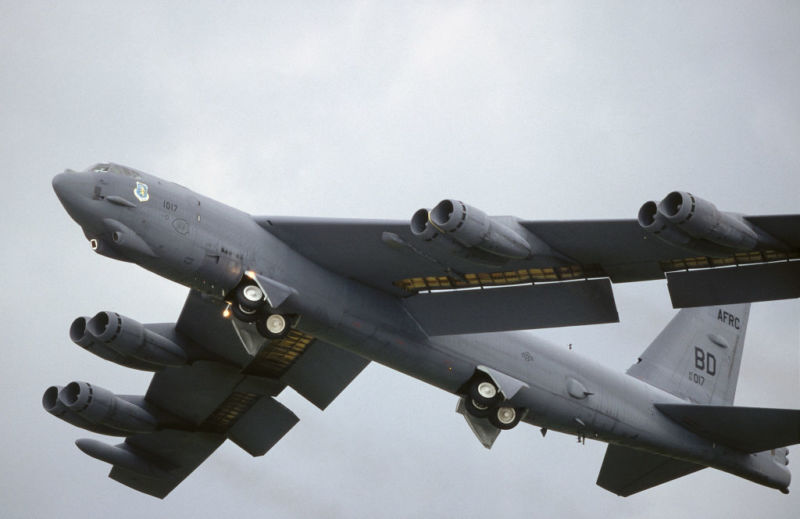
Enlarge / USAF Boeing B-52H Stratofortress taking-off with undercarriage retracting and trailing-edge wing flaps lowered at the 1998 Fairford Royal International Air Tattoo RIAT. (credit: aviationimages.com | Getty)
Glenn House and his colleagues spent more than four years making a new toilet for the B-1 Lancer. The challenge wasn't fitting the john into the cockpit (it went behind the front left seat) but ensuring that every part could handle life aboard a plane that can pull five Gs, break the sound barrier, and spend hours in wildly fluctuating temperatures. The end result didn't just have to work. It had to work without rattling, leaking, or revealing itself to enemy radar. Getting it OK'd for use aboard the bomber was just as complex as making it. "Getting a part approved can take years," says House, the cofounder and president of Walpole, Massachusetts-based 2Is Inc.
Until last year, 2Is was in the military parts business, furnishing replacement bits for assorted defense equipment. (Pronounced "two eyes," it sold off the parts business and now focuses on defense-related supply-chain software.) Providing spare parts for the military is a peculiar niche of the economy. Things like aircraft and submarines spend decades in service, and the companies that made them or supplied their myriad parts often disappear long before their products retire. So when something needs a new knob, seat, or potty, the military often turns to companies that specialize in making them anew.
No comments:
Post a Comment